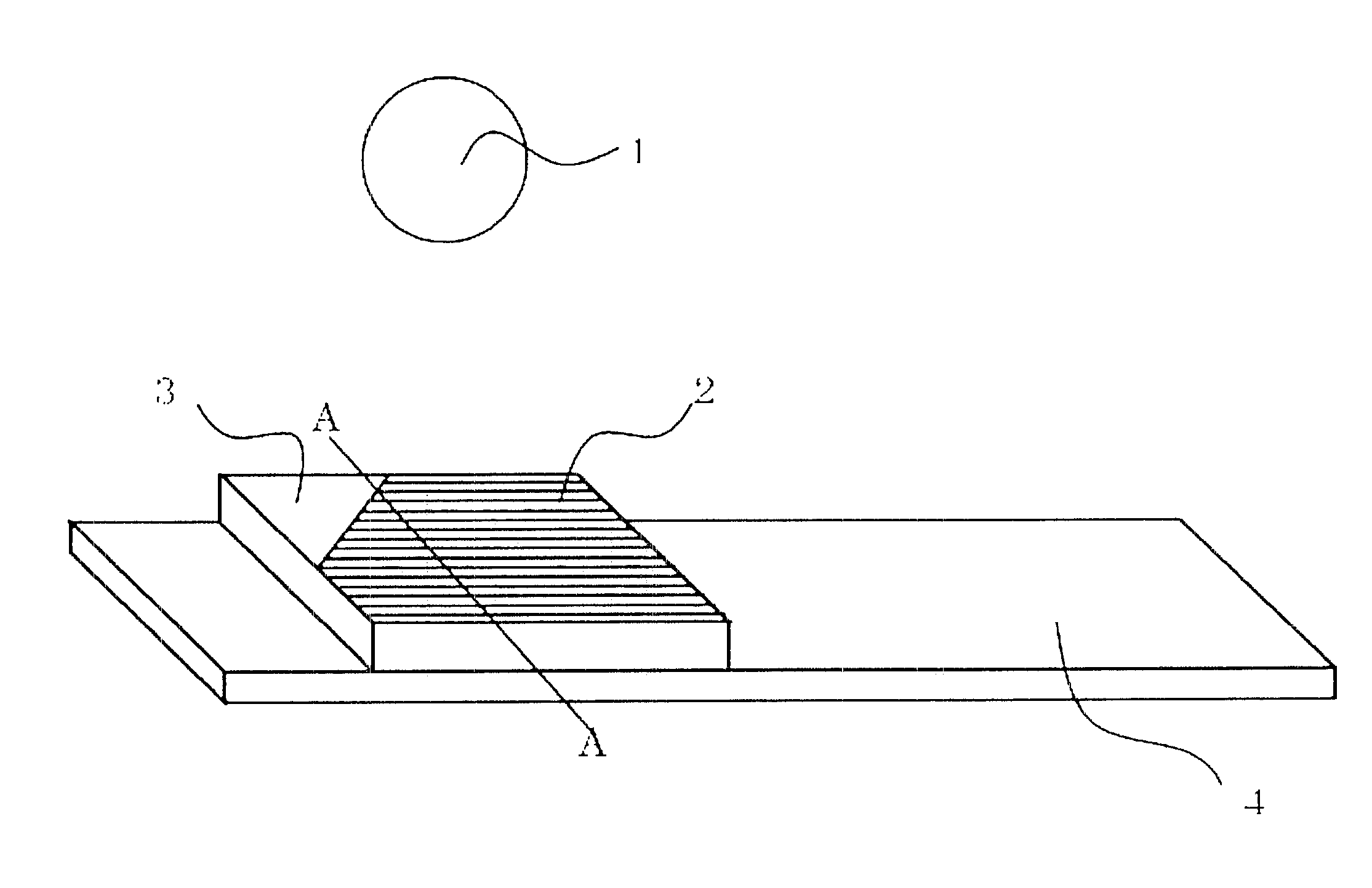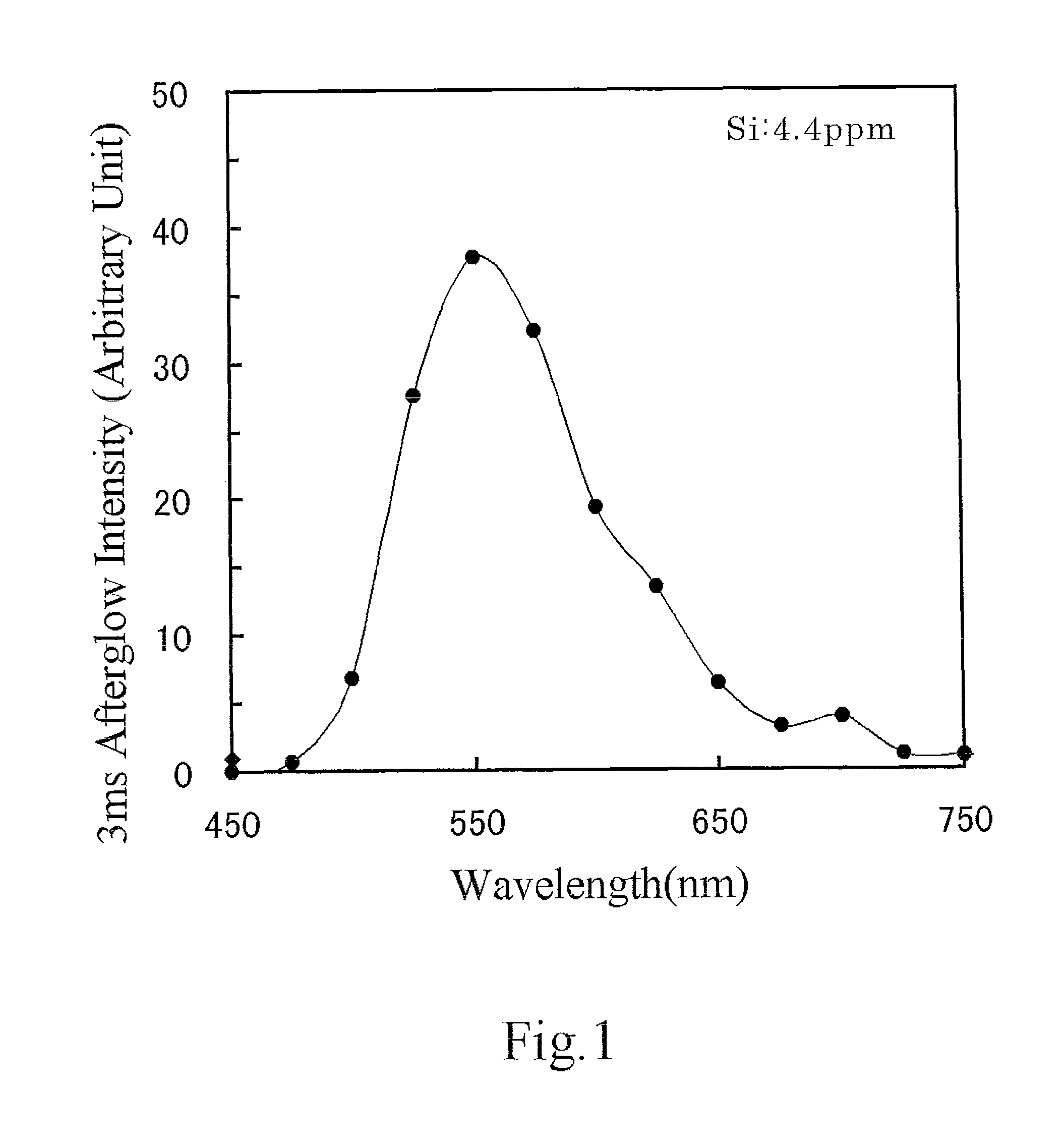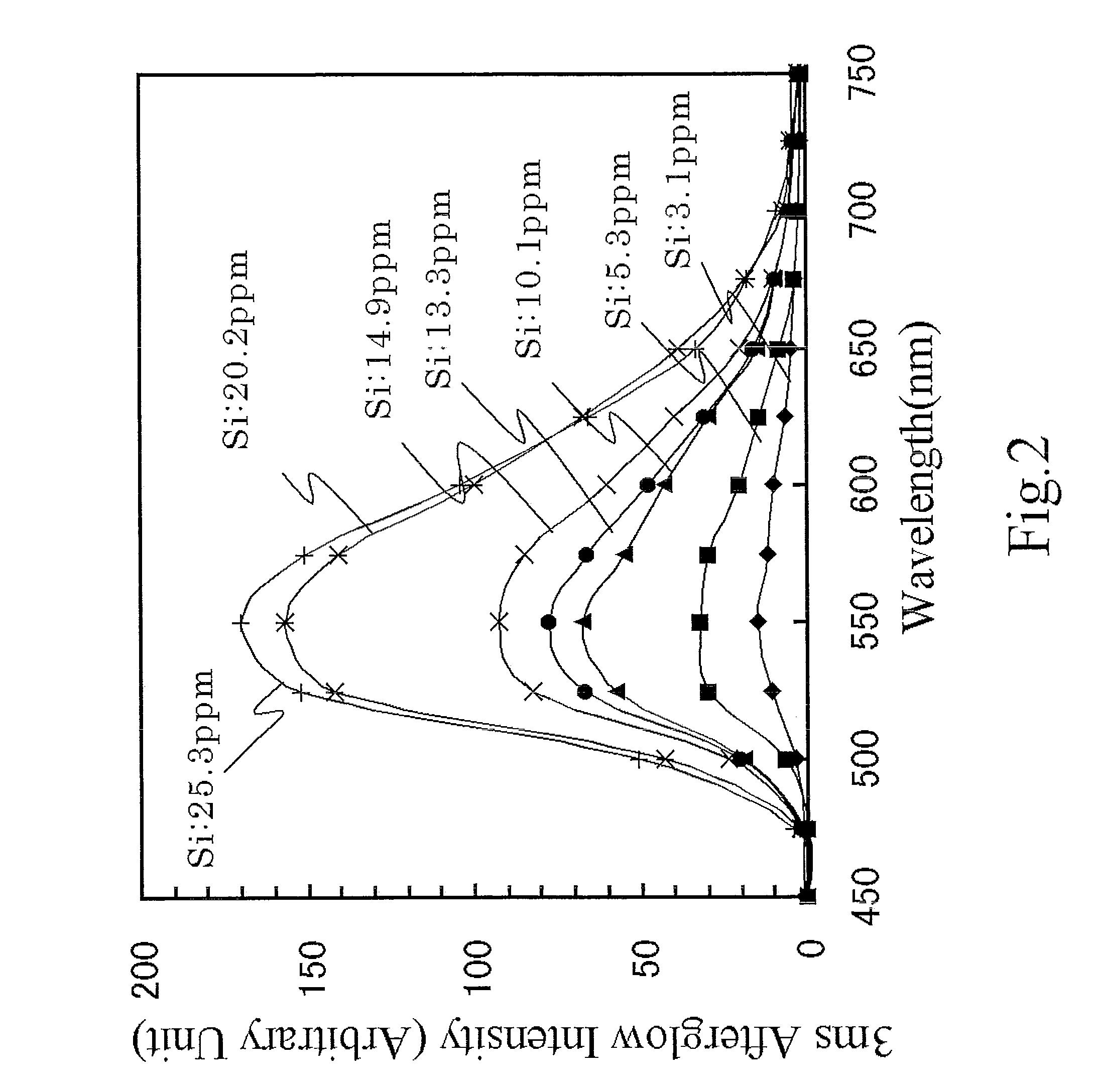Fluorescent material, scintillator using same, and radiation detector using same
a fluorescence material and scintillator technology, applied in the direction of conversion screens, optical radiation measurement, nuclear engineering, etc., can solve the problems of reducing the use efficiency of x-rays, vibration from the exterior vibrating the electrode plate, and high internal pressure of the xenon gas filled chamber, so as to reduce the afterglow level, shorten the scan time, and improve the effect of resolution
- Summary
- Abstract
- Description
- Claims
- Application Information
AI Technical Summary
Benefits of technology
Problems solved by technology
Method used
Image
Examples
first embodiment
[0086]A fluorescent material according to the first embodiment of the present invention contains Ce as an fluorescent activator. In addition, the material contains at least Gd, Al, Ga, O and Si. The element M is at least one of Mg, Ti, and Ni. The composition of the material is expressed by the following general formula.
(Gd1−x−zLuxCez)3+a(Al1−u−sGauSc5)5−aO12
wherein
[0087]0≦a≦0.15,
[0088]0≦x≦0.5,
[0089]0.0003≦z≦0.0167,
[0090]0.2≦u≦0.6, and
[0091]0≦s≦0.1,
and wherein,
[0092]0.5≦Si concentration (mass ppm)≦10, and
[0093]0≦M concentration (mass ppm)≦50.
[0094]This material according to the present invention must contain Si. The content of Si ranges from 0.5 to 10 mass ppm. FIG. 4 shows that when the content of Si exceeds 10 mass ppm, this causes the 3 ms afterglow to exceed 800 ppm. Therefore, the after glow exceeds the tolerance level. This causes the upper limit of the content of Si to be set at 10 mass ppm. However, the upper limit is preferably 5 mass ppm. In addition, first, the raw mater...
second embodiment
[0127]The second embodiment will be described below.
[0128]The above fluorescent material is used as a scintillator. The second embodiment relates to a radiation detector having this scintillator and a light receiving element. This element is designed to detect fluorescent light emitted from the scintillator. This radiation detector is preferably mounted in a medical observation device or a medical inspection device such as an X-ray CT (Computed Tomography) scanner, a PET (Positron Emission Tomography) scanner, or a PET / CT scanner.
[0129]The reason for the above is as follows.
[0130]If the above fluorescent material is used as a scintillator, this makes the fluorescence intensity high. In addition, this makes the decay time constant small. In addition, this makes the level of afterglow low. This makes it possible to obtain a high-performance radiation detector having high time resolution.
[0131]As shown in FIGS. 15 and 16, this radiation detector may be designed to include a scintillato...
example 1
[0136]A resin pot having a volume of 1 liter was provided. An amount of 200 g of a raw material, 1300 g of a high-purity alumina ball having a diameter of 5 mm, and 200 cc of ethanol were placed into the pot. After mixing the contents for 12 h, change in the mass of the alumina ball is 0.06 g. In view of this, and considering that Al2O3 from the ball of a ball mill will enter into the mixture, 126. 91 g of Gd2O3 (Si: 3 mass ppm), 0.363 g of CeO2, 40.62 g of Al2O3 (Si: 10 mass ppm), and 32.05 g of Ga2O3 (Si: 10.0 mass ppm) were weighed. Regarding a powder made of a Gd2O3 raw material, a powder having an average particle size of 2 μm was used. The average particle size refers conventionally an average value. However, in this case, exceptionally, the average particle size means a median particle diameter. Regarding a powder made of an Al2O3, raw material, a powder having an average particle size of 0.6 μm was used. Regarding a powder made of a Ga2O3, raw material, a powder having an av...
PUM
 Login to View More
Login to View More Abstract
Description
Claims
Application Information
 Login to View More
Login to View More - R&D
- Intellectual Property
- Life Sciences
- Materials
- Tech Scout
- Unparalleled Data Quality
- Higher Quality Content
- 60% Fewer Hallucinations
Browse by: Latest US Patents, China's latest patents, Technical Efficacy Thesaurus, Application Domain, Technology Topic, Popular Technical Reports.
© 2025 PatSnap. All rights reserved.Legal|Privacy policy|Modern Slavery Act Transparency Statement|Sitemap|About US| Contact US: help@patsnap.com



